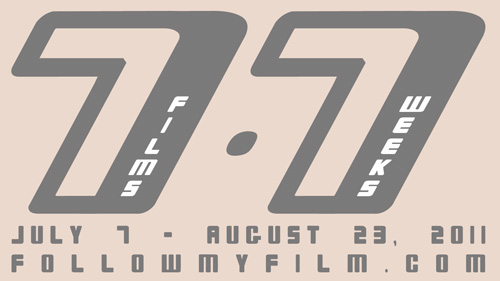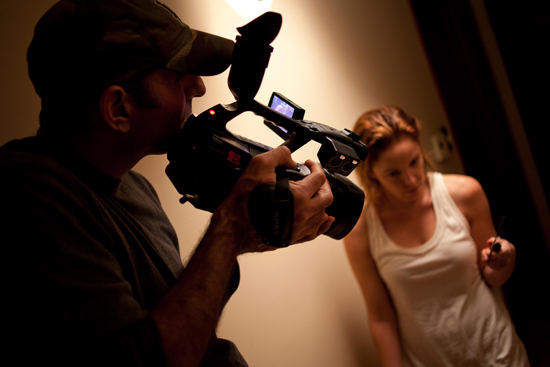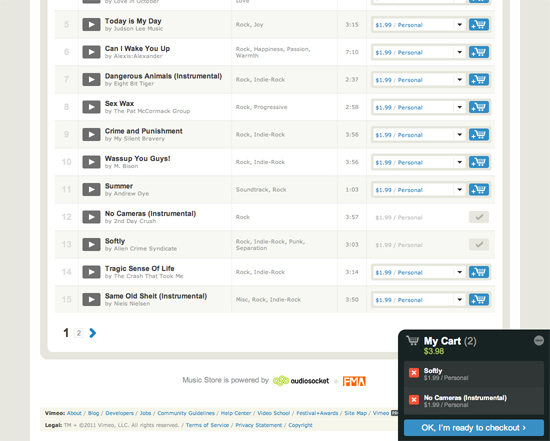I’ve long felt that one of the most important bridges the Indie Film Community needed to build, was the one into the tech community. I’ve felt the ideas & know how of the tech sector held the solution to our neglected pillars of cinema: discovery, participation, appreciation, & presentation. I still do, but I realize now that I was narrowcasting my reasons.
Truly Free Film and Film Cutlure in general got a great boost last week when Prescreen launched. Audiences and filmmakers both found new ways to connect with great films. What I hadn’t anticipated though, was how the process of this new venture’s launch offered additional insight for filmmakers. Prescreen’s CEO, Shawn Bercuson, offers up his lessons.
Until recently, my knowledge of the movie industry was limited. I come from a tech background and I’m completely addicted to using technology to find better ways to solve everyday problems. Prescreen is the 3rd business venture I’ve been associated with since the inception of the idea through the product launch – with the most notable one being Groupon. We built Prescreen to help movies find an audience they may not otherwise have the ability to reach. Like any movie, starting a business takes imagination, creativity, the ability to raise money, a terrific supporting cast, a deep understanding of your audience and, most importantly, thick skin. (Filmmakers – sound familiar?)
I officially entered the movie business this past February. I’m not going to lie, I quickly became overwhelmed by the information overload and the treacherous landscape that needed to be navigated in order to get Prescreen off the ground. To my surprise, I was delighted to discover the similarities between what we were doing at Prescreen and what the content owners to whom I was speaking with were doing with their movies. I quickly realized that launching a technology startup is eerily similar to producing, directing, and distributing a movie. That said, I also uncovered a few key differences. I’ll do my best to describe two things that I think are worth noting. Also note, these findings are not all encompassing. Many movie industry folks share my views and some techies do not.
Hustle. Here in San Francisco, there is a saying that “The currency in New York is cash. The currency in Los Angeles is celebrity. And the currency in San Francisco is ideas.” Perhaps it’s because it is hard to put a dollar value on an idea or perhaps it is the just the vast number of ideas that exist, but people in the technology business tend to move a few steps faster and work a few more hours than the people in the movie business. There are a lot of tech companies out there and probably a lot more movies. In order for people to discover your business or movie, you must out work your competition and leverage all the tools at your disposal. Keep in mind, people can only consume so much content in a day, month, or year. What are you doing to make sure that your content is the content that people are consuming? Kevin Smith is a terrific example of someone who hustles and uses all the tools at his disposal in order to create signal out of the noise for his movie.
For us at Prescreen, we’re confident in the product that we’re building but we know we still need to leverage our entire arsenal of tools in order to get people to know who we are and use our service. Everyday, we use all the tools at our disposal including, but not limited to, Twitter, Facebook, and email to reach an audience that may otherwise not know about us. We just launched last Wednesday, but soon you will start to see us using or creating tools that help build our audience. Have you heard of the Prescreen TrendSpot feature? Check it out (Click here. To bypass the signup process, click the Prescreen logo. The TrendSpot is the phrase that says “Earn Free Movies” on the left side of our homepage once you get beyond the signup page. Click on it to expand it).
Ecosystem. Don’t get me wrong, people in the movie industry often collaborate and find tons of success, but I’ve heard too many stories about nightmarish relationships that only breed animosity and resentment. What goes around comes around and in a world with this much transparency and access, those relationships are just not sustainable. The technology space, however, is often referred to as an “ecosystem.” We view our industry as more of a living thing with mutually symbiotic relationships than just transactional business relationships. We know that the more people who use each other’s tools, the more chance we have for success.
Unfortunately, to the general public, the term “independent film” often carries a negative connotation. As we all know, this is a travesty. There are too many entertaining, educational, or enlightening stories that never find a home. We need to work together to change the public perception so that we can all benefit. Yes, people can only consume so much content, but there are a lot of people out there and every movie has an audience (some just harder to find than others). 1st time filmmaker, Kenton Bartlett does a terrific job with this YouTube video trying to mobilize his audience to work for him by giving access to a special behind-the-scenes video about his film, “Missing Pieces.”
We started Prescreen to help build the ecosystem within the movie community. Movies are inherently social, but there was no tool that existed that brought real-life conversations about movies between friends to the digital world where we can connect to millions of people around the world who share our interests. Our goal is to help movies find a home leveraging this ecosystem and provide the tools necessary for moviegoers to share them with their friends, coworkers, and relatives.
I’m more excited then ever to be a part of the rapidly changing landscape of the movie industry and help cultivate an ecosystem that will benefit all of us. There are now more tools than ever before to successfully market a movie and put the right content in front of the right people at the right time. Remember, you don’t need to use all of them, just the ones that work for you.
— Shawn Bercuson
Today, Prescreen featured it’s first world premiere with “Missing Pieces“. Prescreen launched nine days ago, and will offer a new film every day going forward.
Check out the trailer for Missing Pieces:





 Brian Godshall has handled music clearances and/or licensing for over 15 years for many dozens of independent films including the more recent movies PLEASE GIVE and JACK GOES BOATING as well as past films such as TOWELHEAD, BORN INTO BROTHELS, GARDEN STATE, GUNNIN’ FOR THAT #1 SPOT, KINSEY, THE NAMESAKE, SONGCATCHER and many others. He looks forward to new ideas and changes in the independent film industry. Email: info@bgoodshallclearmusic.com Web:
Brian Godshall has handled music clearances and/or licensing for over 15 years for many dozens of independent films including the more recent movies PLEASE GIVE and JACK GOES BOATING as well as past films such as TOWELHEAD, BORN INTO BROTHELS, GARDEN STATE, GUNNIN’ FOR THAT #1 SPOT, KINSEY, THE NAMESAKE, SONGCATCHER and many others. He looks forward to new ideas and changes in the independent film industry. Email: info@bgoodshallclearmusic.com Web: 